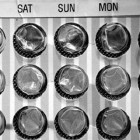
Nearly Half of U.S. States Enact Juvenile Justice Reforms
|
The public remains largely unaware that 95 percent of juveniles tried in adult courts nationwide are non-violent offenders.
Juvenile Justice Information Exchange (https://jjie.org/category/research-studies/page/2/)

The public remains largely unaware that 95 percent of juveniles tried in adult courts nationwide are non-violent offenders.

A closer look at the report on the mental health services provided in the Illinois DJJ reveals several areas in need of improvement.

Leaders and experts explore using brain science to craft new juvenile justice policies at a forum at the National Conference of State Legislatures.

A recent study found that low-income Boston teens with summer jobs were less likely to engage in violence than teens without jobs.

The Vera Institute has released a guide to help organizations interested in creating or strengthening a research base for their work. Although written primarily for juvenile justice initiatives, the guide may be helpful for other youth-serving programs as well.

Recently, the American Civil Liberties Union (ACLU) and Human Rights Watch published a new report titled “Growing Up Locked Down: Youth in Solitary Confinement in Jails and Prisons Across the United States.”
The publication involved interviews with more than 125 juveniles in 19 states, alongside detention officials in 10 states.

Youths are involved in murders, either as victims or perpetrators, at about the same rate as they have been for the last few years, according to newly gathered statistics. Both figures are far down from an early 1990s peak. In 1994, juveniles were involved in committing more than 2,300 murders. The year before that, nearly 3,000 minors were murder victims.
In 2010, the statistics had fallen to 788 and 948 respectively, according to data recently published by the federal Office of Juvenile Justice and Delinquency Prevention, which complies figures voluntarily reported by many jurisdictions nationwide, including the largest urban areas in the country. For the past decade, neither number has gone above 1,100.

Earlier this month, the Centers for Disease Control (CDC) unveiled new data suggesting more teen girls are using birth control. Part of the “Morbidity and Mortality Weekly Report,” the data was compiled from several National Survey of Family Growth (NSFG) cycles. According to the report, approximately 60 percent of sexually active teens reported using contraceptive methods considered “highly effective” by the CDC, such as hormonal treatments or intrauterine devices - an increase from 47 percent in 1995. Additionally, the CDC report estimated that 57 percent of females ages 15 to 19 reported they’d never had sex, up from 49 percent in 1995. The new report analyzed NFSG data collected from three different intervals - 1995, 2002, and a five-year survey encompassing findings from 2006 to 2010.

A new study finds that states are failing to do much if anything to keep young people from being exposed to advertisements promoting alcoholic beverages. The report, issued by the Center on Marketing and Youth (CAMY) at the Johns Hopkins Bloomberg School of Public Health notes eight methods, referred to as best practices, for states to limit and reduce youth exposure to such advertisements. And according to the new research findings, only 11 states implement more than one “best practice” policy – with 22 implementing none at all. In State Laws to Reduce the Impact of Alcohol Marketing on Youth: Current Status and Model Policies, CAMY researchers conclude that most states are doing inadequate jobs of keeping children from being exposed to alcohol ads in both traditional and untraditional media formats. The report found the legislative and regulatory steps taken by most states to be both “disappointing” and “inactive.”
The report assessed states on their utilization of best practices established by CAMY guidelines, including measures which prohibit alcohol advertising targeting minors, restrict outdoor alcohol ads in places children may frequent and establish jurisdictions over in-state television and radio advertising.

A new policy brief states that performance-based scholarships – financial aid incentives allotted to students based upon one’s ability to achieve certain academic benchmarks – may serve as a catalyst for both improved grades and greater odds of finishing college, especially for low-income students. The brief, Performance-Based Scholarships: Emerging Findings from a National Demonstration issued by the Manpower Demonstration Research Center (MDRC) was published earlier this month. The policy brief examines the effects of performance-based scholarships on students in select colleges in, among other states, New York, California and Florida, with the authors saying that their findings seem to indicate a slight, yet positive impact on the academic progress of students enrolled in such financial assistance programs.
In 2009, an MDRC report on Louisiana’s Opening Doors program exhibited improved grades, higher credit accumulation levels and greater likelihoods of retention for several college students that were enrolled in the performance-based scholarship program. A year earlier, MDRC began a six-state study, the Performance-Based Scholarship Demonstration, to gauge the overall effectiveness of scholarship programs contingent upon ongoing student academic progress. Although the authors say that the preliminary findings for the six states surveyed for the brief were not as pronounced as the Louisiana data, they still noted that performance-based scholarship programs resulted in several statistically-significant influences for students, including an increase in credits earned and an increase in students’ abilities to meet end-of-term benchmarks during program terms.
MDRC research on the impact of performance-based scholarships will continue until December 2014.